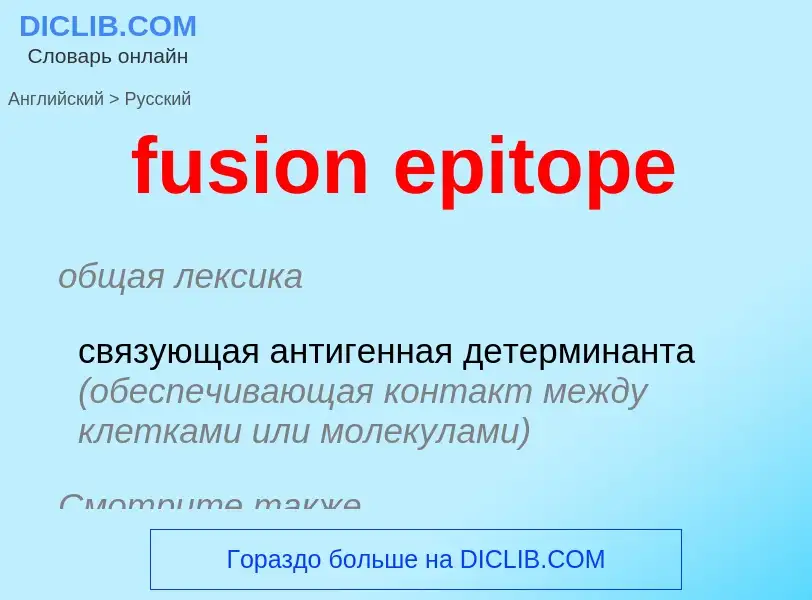Translation and analysis of words by ChatGPT artificial intelligence
On this page you can get a detailed analysis of a word or phrase, produced by the best artificial intelligence technology to date:
- how the word is used
- frequency of use
- it is used more often in oral or written speech
- word translation options
- usage examples (several phrases with translation)
- etymology
fusion epitope - translation to English
общая лексика
связующая антигенная детерминанта (обеспечивающая контакт между клетками или молекулами)
Смотрите также
['fju:ʒ(ə)n]
общая лексика
слияние
вплавление
конденсация
непровар
плавильный
плавка
провар
размягчение
сплав
сплавление
таяние
термитный
физика
синтез
медицина
анкилоз
артродез
фузия
строительное дело
плавление
нефтегазовая промышленность
оплавление
существительное
общая лексика
плавка
расплавление
сплавление
расплавленная масса
расплав
слияние
коалиция
расплавленная масса, сплав
слияние, объединение
физика
термоядерный сплав
психология
смешанные побуждения или чувства
музыка
фьюжн
джаз-рок (сплав джаза и рока)
Definition
Wikipedia
In immunology, a linear epitope (also sequential epitope) is an epitope—a binding site on an antigen—that is recognized by antibodies by its linear sequence of amino acids (i.e. primary structure). In contrast, most antibodies recognize a conformational epitope that has a specific three-dimensional shape (tertiary structure).
An antigen is any substance that the immune system can recognize as being foreign and which provokes an immune response. Since antigens are usually proteins that are too large to bind as a whole to any receptor, only specific segments that form the antigen bind with a specific antibody. Such segments are called epitopes. Likewise, it is only the paratope of the antibody that comes in contact with the epitope.
Proteins are composed of repeating nitrogen-containing subunits called amino acids. The linear sequence of amino acids that compose a protein is called its primary structure, which typically does not present as simple line of sequential proteins (much like a knot, rather than a straight string). But, when an antigen is broken down in a lysosome, it yields small peptides, which can be recognized through the amino acids that lie continuously in a line, and hence are called linear epitopes.

